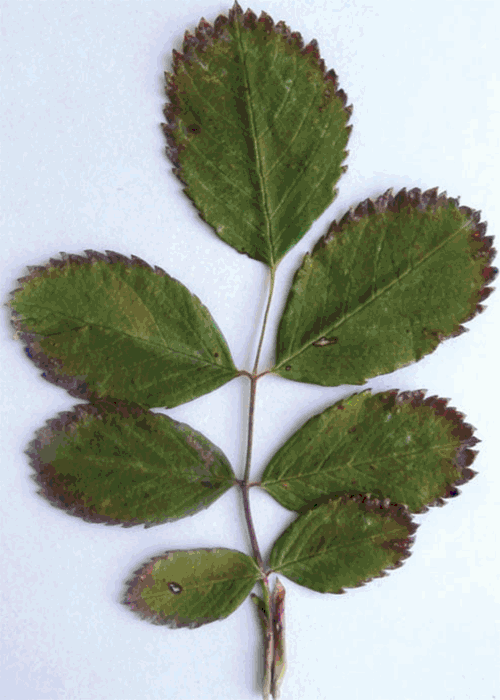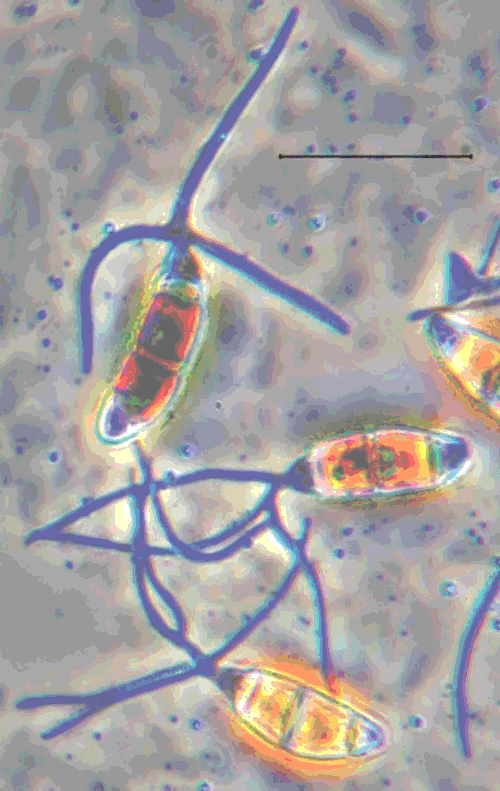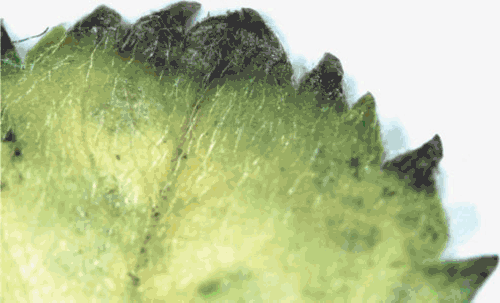First report of Truncatella angustata causing leaf spot on Rosa canina in Kazakhstan
C. Eken A C , A. Spanbayev B , Z. Tulegenova B and S. Abiev BA Department of Plant Protection, Faculty of Agriculture, Atatürk University, 25240 Erzurum, Turkey.
B Department of Biology and Biotechnology, Gumilyov Eurasian University, 5 Munaitpassov Street Astana, 473021, Kazakhstan.
C Corresponding author. Email: cafereken@hotmail.com
Australasian Plant Disease Notes 4(1) 44-45 https://doi.org/10.1071/DN09018
Submitted: 20 April 2009 Accepted: 30 April 2009 Published: 18 May 2009
Abstract
Truncatella angustata is recorded as the cause of leaf spots on Rosa canina, for the first time from Kazakhstan.
In Kazakhstan, dog rose (Rosa canina L.) is cultivated as an ornamental in gardens and parks, and also for flowers, fruits and roots that are used for medicinal purposes. In 2008, a routine disease survey was conducted on trees and shrubs in gardens and parks of Karaganda province, Kazakhstan. Leaf lesions on dog rose were frequently observed in the Karaganda province at one location. More than 20% of the plants showed disease symptoms. Initial characteristic symptoms were brown-violet lesions on the petiole end of leaves. These occurred at the tip or edge of the leaf (Fig. 1). Leaves showing symptoms were surface-disinfected for 2 min in 2% NaOCl, and plated onto potato dextrose agar (PDA) and incubated at 25°C. One fungus was consistently isolated from leaves and transferred into pure culture. Single-spore cultures from these colonies were grown on PDA to assist species identification. Conidia were 17.4–21.3 × 6.2–8.6 µm, with dark median cells, three transverse septa, basal appendages absent, apical appendages often branched, 17.6–31.6 µm long (Fig. 2). Based on these morphological characteristics, the fungus was identified as Truncatella angustata (Pers.) Hughes (Sutton 1980).

|

|
To satisfy Koch’s Postulates, conidia were harvested from 15-day-old cultures grown on PDA. A conidial suspension (7 × 105 conidia/mL) of the fungus was sprayed onto leaves of young R. canina plants. Both inoculated plants and control plants (inoculated with sterile water) were covered with plastic bags for 72 h in a glasshouse at 23 ± 2°C. After 12–15 days, symptoms on inoculated plants (Fig. 3) were similar to those occurring in nature. Control plants did not develop any symptoms. The pathogen was successfully reisolated from infected leaves and petioles.

|
Truncatella angustata causes leaf spot on Leucospermum cordifolium (Taylor et al. 2001), core rot in apple (Hu et al. 1996), canker and twig dieback on Vaccinium spp. (Espinoza et al. 2008), but only the leaf spot phase was observed in our work. However, to our knowledge, this is the first report of T. angustata from Kazakhstan on any host.
Espinoza JG,
Briceño EX,
Keith L, Latorre BA
(2008) Canker and twig dieback of bluberry caused by Pestalotiopsis spp. and a Truncatella sp. in Chile. Plant Disease 92, 1407–1414.
| Crossref | GoogleScholarGoogle Scholar |

Hu LP,
Ma CH,
Yang GM, Tan WJ
(1996) Studies on the causal agent of apple mouldy core and core rot. Journal of Fruit Science 13, 157–161.

Taylor JE,
Crous PW, Swart L
(2001) Foliicolous and caulicolous fungi associated with Proteaceae cultivated in California. Mycotaxon 78, 75–103.



